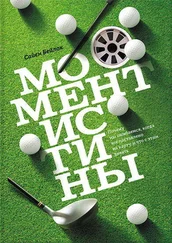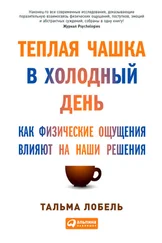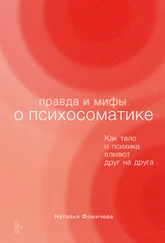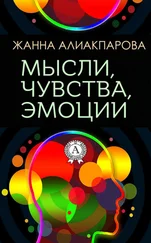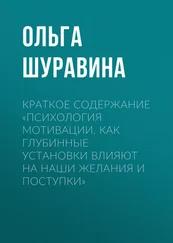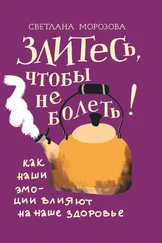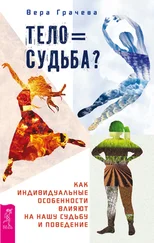Jones Rochelle . Mozart’s Nice but Doesn’t Increase IQs // CNN.com. – 25.08.1999. – URL: http://www.cnn.com/HEALTH/9908/25/mozart.iq/.
Chabris C. F. Prelude or Requiem for the Mozart Effect? // Nature. – 1990. – Vol. 400. – P. 826–827.
Pietschnig J. et al . Mozart Effect – Shmozart Effect: A Meta-Analysis // Intelligence. – 2010. – Vol. 38. – P. 314–323.
Nantais K. M., Schellenberg E. G. The Mozart Effect: An Artifact of Preference // Psychological Science. – 1999. – doi:10.1111/1467–9280.00170.
Недавно книга профессора Йельского университета, китаянки, живущей в США, Чуа Э. «Боевой гимн матери-тигрицы. Как воспитать вундеркинда. Книга, которая вызвала скандал» вышла также и на русском языке. Прим. пер.
См .: URL: http://mathcounts.org/.
Подробности см . на: URL: http://thefundsa.blogspot.com/2012_03_01_archive.html.
Andres M. et al. Contribution of Hand Motor Circuits to Counting // Journal of Cognitive Neuroscience. – 2007. – Vol. 19. – P. 1–14; Andres M. et al. Actions, Words, and Numbers: A Motor Contribution to Semantic Processing? // Current Directions in Psychological Science. – 2008. – Vol. 17. – P. 313–317; Andres M. et al. Common Substrate for Mental Arithmetic and Finger Representation in the Parietal Cortex // Neuroimage. – 2012. – Vol. 62. – P. 1520–1528.
См ., например: Mayer E. A. Pure Case of Gerstmann Syndrome with a Subangular Lesion // Brain. – 1999. – Vol. 22. – P. 1107–1120.
Moo L. R. et al. Interlocking Finger Test: A Bedside Screen for Parietal Lobe Dysfunction // Journal of Neurology, Neurosurgery, & Psychiatry. – 2003. – Vol. 74. – P. 530–532.
Luca S. Di, Granà A., Semenza C., Seron X., Pesenti M. Finger-Digit Compatibility in Arabic Numeral Processing // Quarterly Journal of Experimental Psychology. – 2006. – Vol. 59. – P. 1648–1663. См . также: Fischer M. H. Finger Counting Habits Modulate Spatial-Numerical Associations // Cortex. – 2008. – Vol. 44. – P. 386–392; Domahs F. et al. Embodied Numerosity: Implicit Hand-Based Representations Influence Symbolic Number Processing across Cultures // Cognition. – 2010. – Vol. 116. – P.251–266.
Butterworth B . The Mathematical Brain. London: Macmillan, 1999. Цит. по: Noel M. Finger Gnosia: A Predictor of Numerical Abilities in Children? // Child Neuropsychology. – 2005. – Vol. 11. – P. 413–430. Другие же исследователи утверждают, что связь между способностью к математике и двигательными умениями пальцев можно объяснить тем, что участки мозга, отвечающие за эти два типа способностей, просто находятся рядом друг с другом, но при этом не совпадают. Но в одном ученые едины: дети со слабо развитыми тонкими двигательными навыками с большей вероятностью столкнутся с трудностями при освоении математики в более позднем возрасте.
Обзор литературы и данных исследований по теме можно найти в следующих публикациях: Noël M. P. Finger Gnosia: A Predictor of Numerical Abilities in Children? // Child Neuropsychology. – 2005. – Vol. 11. – P. 413–430; Gracia-Bafalluy M., Noël M. P . Does Finger Training Increase Young Children’s Numerical Performance? // Cortex. – 2008. – Vol. 44. – P. 368–375; Imbo I. et al . Passive Hand Movements Disrupt Adults’ Counting Strategies // Frontiers in Psychology. – 2011. – Vol. 2. – P. 1–5; Penner-Wilger M., Anderson M. L. The Relation Between Finger Gnosis and Mathematical Ability: Why Redeployment of Neural Circuits Best Explains the Finding // Frontiers in Psychology. – 2013. – doi:10.3389/fpsyg.2013.00877.
См. Butterworth B . The Mathematical Brain. London: Macmillan, 1999. Цит по: Noël M. P. Finger Gnosia: A Predictor of Numerical Abilities in Children? // Child Neuropsychology. – 2005. – Vol. 11. – P. 413–430.
Gracia-Bafalluy M., Noël M. P. Does Finger Training Increase Young Children’s Numerical Performance? // Cortex. – 2008. – Vol. 44. – P. 368–375. См. также: Fischer J. P. Numerical Performance Increased by Finger Training: A Fallacy Due to Regression toward the Mean? // Cortex. – 2010. – Vol. 46. – P. 272–273. Gracia-Bafalluy M. et al. Consequences of Playing a Musical Instrument on Finger Gnosia and Number Skills in Children. (Доклад, представленный на симпозиуме на тему «Числа, пальцы и мозг», проходившем в июне 2007 г. в Лувенском католическом университете в рамках Ежегодной конференции Бельгийской ассоциации психологии.) Graziano A. B. et al. Enhanced Learning of Proportional Math through Music Training and Spatial-Temporal Training // Neurological Research. – 1999. – Vol. 21. – P. 139–152. Schmithorst V. J., Holland S. K. The Effect of Musical Training on the Neural Correlates of Math Processing: A Functional Magnetic Resonance Imaging Study in Humans // Neuroscience Letters. – 2004. – Vol. 354. – P. 193–196. Vaughn K. Music and Mathematics: Modest Support for the Oft-Claimed Relationship // Journal of Aesthetic Education. – 2000. – Vol. 34. – P. 149–166. Читателю следует отметить, что связь между музыкой и математикой нуждается в дальнейшем изучении.
См.: URL: http://www.eng.cam.ac.uk/news/daniel-wolpert-real-reason-brains. Дополнительную информацию о жизни асцидии можно получить из книги: Llinas R. The I of the Vortex. Cambridge, MA: MIT Press, 2001.
Hauk O., Johnsrude I., Pulvermüller F. Somatotopic Representation of Action Words in Human Motor and Premotor Cortex // Neuron. – 2004. – Vol. 41. – P. 301–307.
Glenberg A. M. et al . Activity and Imagined Activity Can Enhance Young Children‘s Reading Comprehension // Journal of Educational Psychology. – 2004. – Vol. 96. – P. 424–436.
См .: Gee J. P. Reading as a Situated Language: A Sociocognitive Perspective // Theoretical Models and Processes of Reading, 6th edition / Ruddell R. B. et al. (eds.). – Newark, DE: International Reading Association, 2013.
Подробнее см .: Lakoff G., Nunez R. E. Where Mathematics Comes From. New York: Basic Books, 2000.
Читать дальше
Конец ознакомительного отрывка
Купить книгу
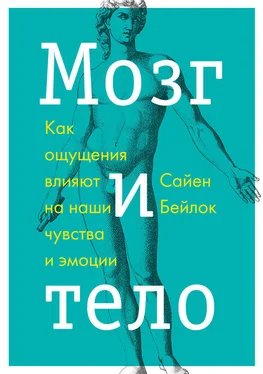
![Дэниел Гоулман - Измененные черты характера [Как медитация меняет ваш разум, мозг и тело]](/books/26978/deniel-goulman-izmenennye-cherty-haraktera-kak-med-thumb.webp)
